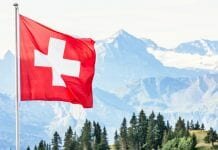
2019’s EU elections, which ran from Thursday 23 May to Sunday 26 May, enjoyed voter turnout of more than 50% across the bloc.
With turnout at 50.82% EU-wide, the elections saw the first increase in turnout since direct elections began in 1979 and the highest rate of voting since 1999, with numbers of voters rising in 21 Member States. Turnout increased by more than 10% in seven countries.
Online platforms and social media providers including Facebook, Google, Snapchat and Twitter offered extra services and features to users in the EU to encourage them to vote, ranging from special Snapchat filters and an “I voted” button on Facebook to increased visibility of candidates’ profiles on YouTube. Music streaming service Spotify produced an election-themed playlist and in-app reminders to vote; while dating app Tinder included in-app promotion of the elections in France and Germany. Ride-hailing apps Bolt and My Taxi offered discounts to passengers on their way to polling stations.
On Sunday, the last day of the elections, the European Parliament hosted a media event with around 1,300 journalists representing print, online, TV and radio outlets – including some 200 reporters from non-EU countries – could follow the elections and report live on developments. European Parliament spokesperson Jaume Duch said: “The media interest for these elections has been much higher than for previous elections. We never had so many journalists registered for the election night. This clearly demonstrates the growing importance of this transnational democratic exercise, which is unique in the world.”
EU28 leaders will meet today for a post-election summit to begin the process of determining candidates for the EU presidency and other high level roles; to be followed by a joint press conference by European Council President Donald Tusk and outgoing President of the European Commission Jean-Claude Juncker. The new European Commission will take office from 1 November 2019.


















